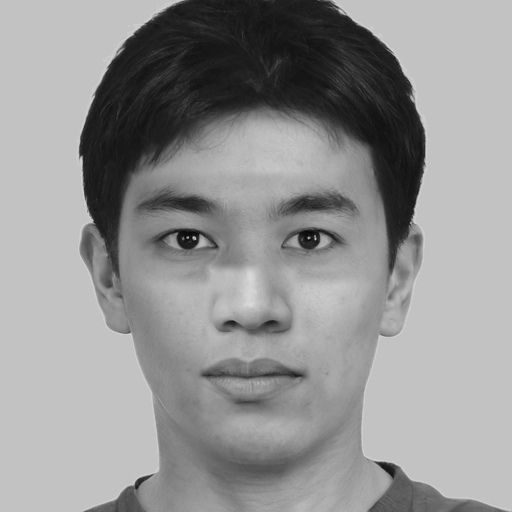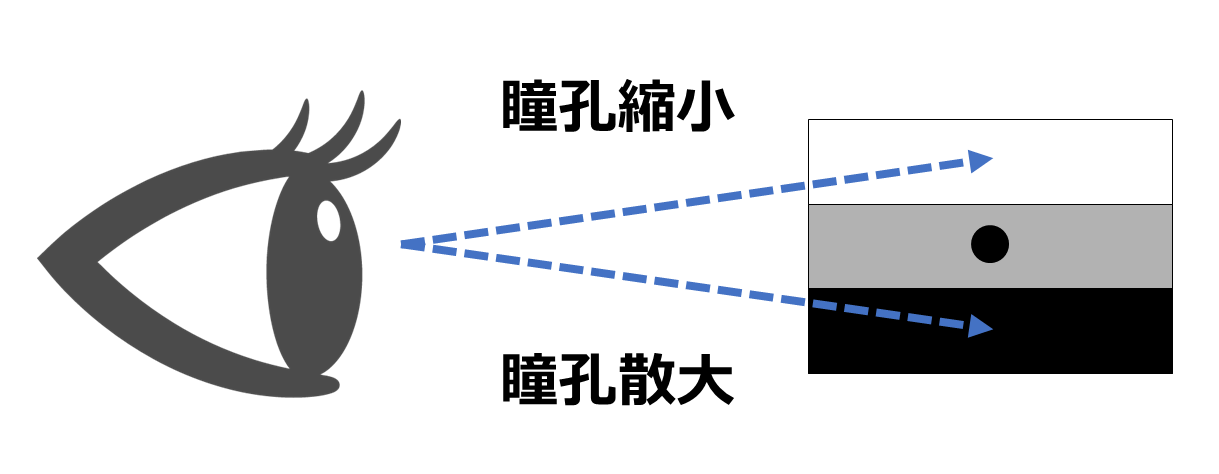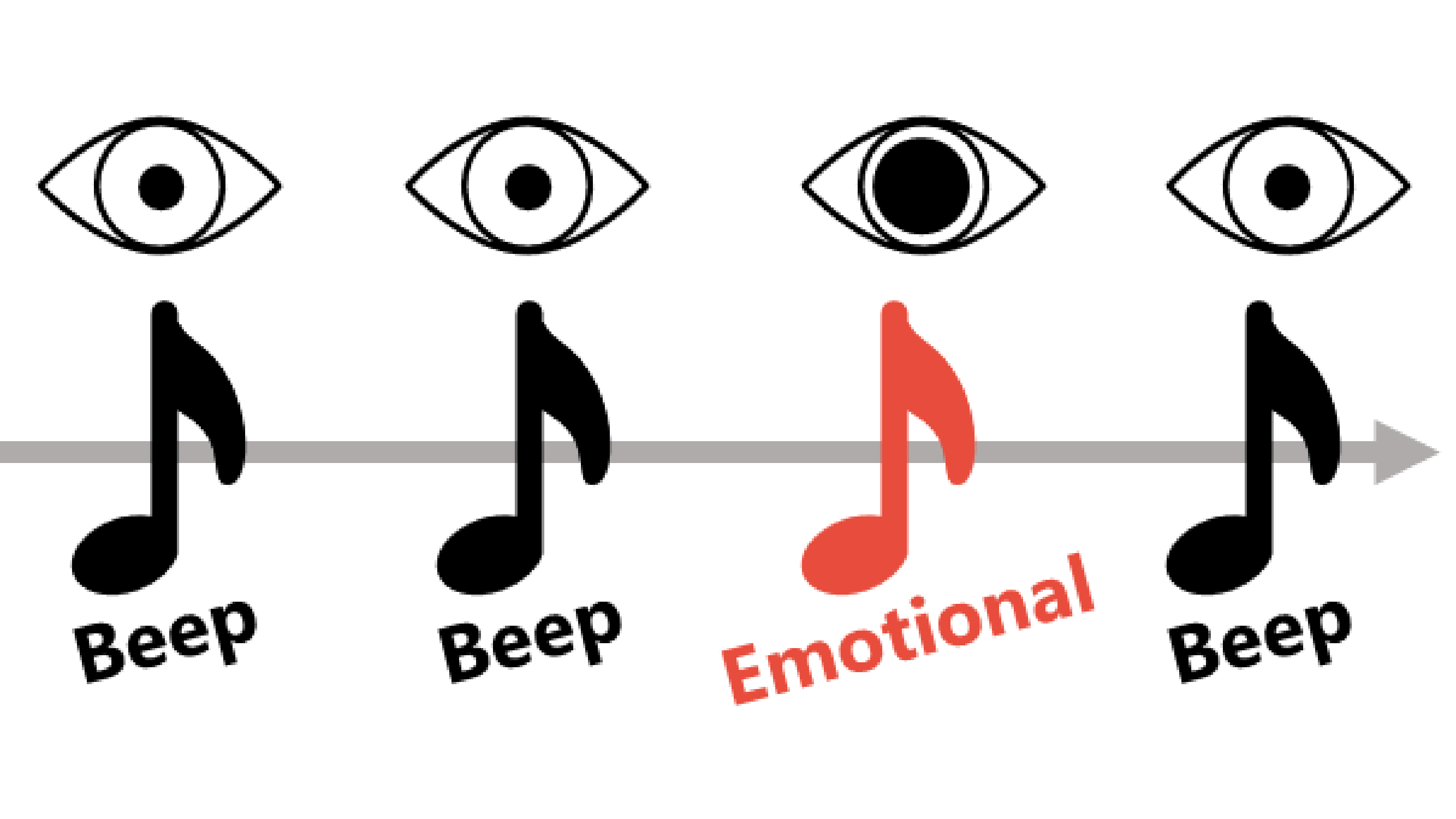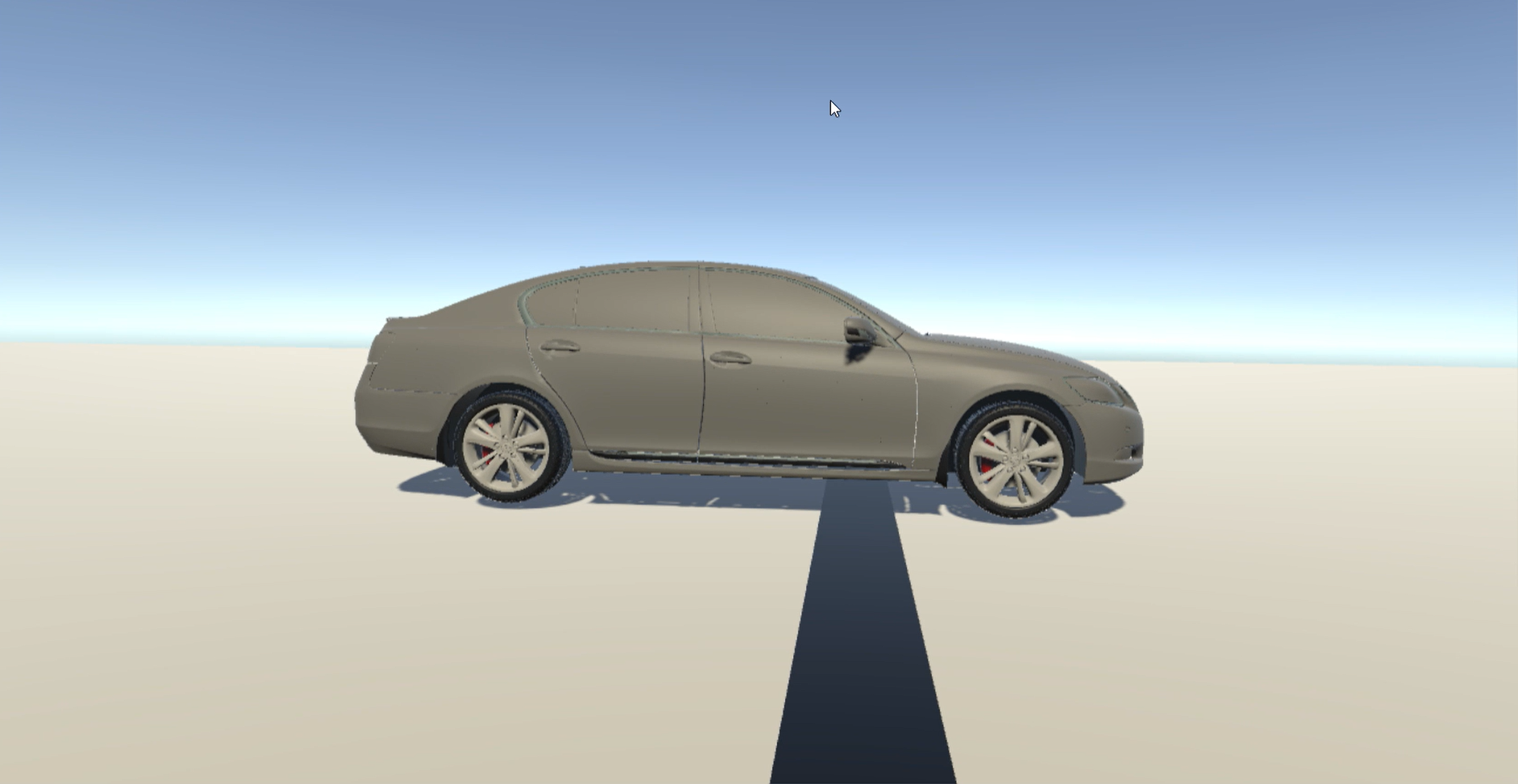Visual EEG

Progress of electroencephalogram research is remarkable. Gradually, neural function is being elucidated. Our aim is to elucidate operation of the brain and its visual mechanism. We are also challenging on the application of BCI(Brain-Computer Interface).
Electroencephalogram
Electroencephalogram (EEG) refers to the brain electrical activity recorded with electrodes on the scalp. EEGs are electrical signals of several tens of microvolts, which can be observed by amplification with an electroencephalograph.
Event-Related Potentials (ERP) is the brain response that originates in brain activity caused synchronizing with specific event. Studies on ERP can help us to understand human brain mechanism. In our laboratory, visual information processing system is investigated by measuring ERP during visual task.
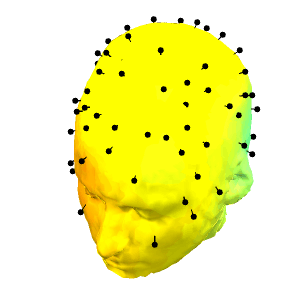
Pupil
The pupil is commonly called “Kurome (黒目): iris” in Japanese, and in the case of human eyes, the pupil size varies between 2 and 8 mm. Although it is known that the size of our pupil increase in a dark environment (dilation) and decrease in a bright environment (constriction), various other aspects such as cognitive load, emotional state, interest in things and surprises effects the size too. Which means the size of the pupil is also linked to our internal state. Our laboratory measures eye movements during various experiments as well as EEG measurement, and investigates all human cognitive mechanisms from pupil diameter information.
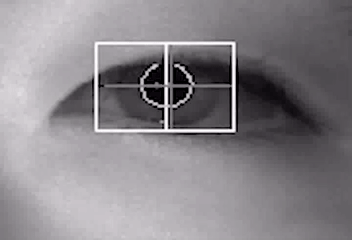
Study on “Face”
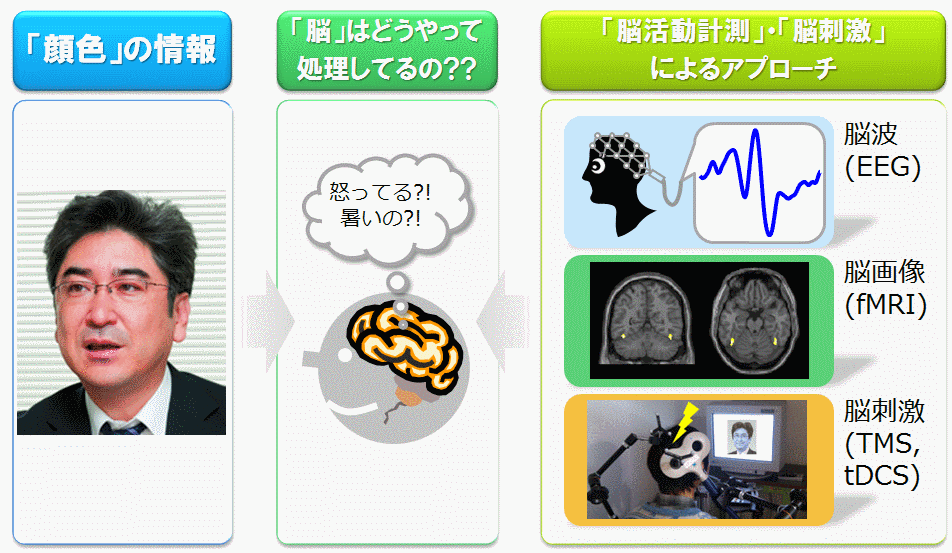
Face perception is important for our social interaction. Our study has been revealed that when we perceive faces, not only face features such as configuration and contour but also face color, affect our face perception. Aim we continue revealing the effect of the color information on face processing and consider its developmental aspects using tools such as EEG, fMRI, TMS.
Study on “Emotion”
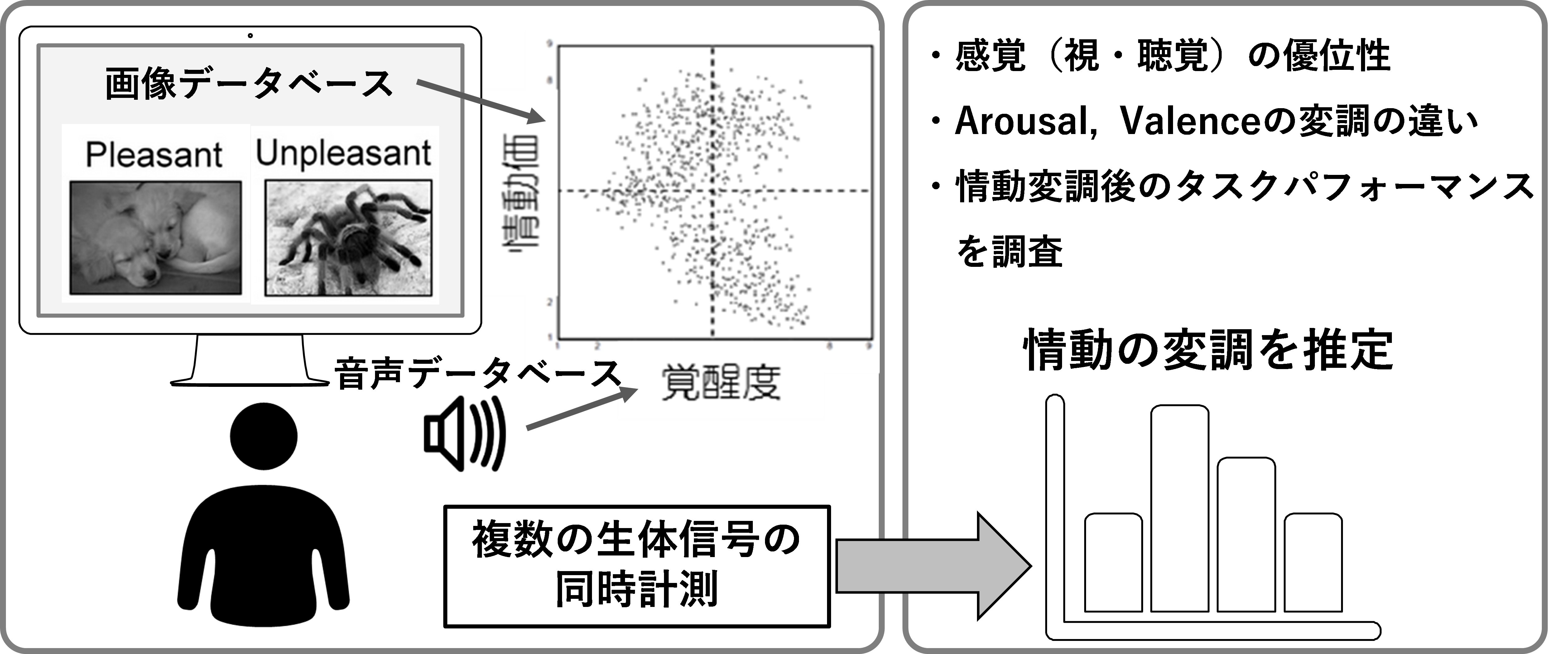
Human emotions play a key role for formation of a character. It is induced by accepting the sensory stimulus such as visual images and auditory sounds. Since the 1960s, emotion has been investigated in fields such as cognitive psychology and neuroscience, and its mechanism has been gradually revealed along with the development of measuring methods of physiological response such as fMRI and EEG. These findings are important researches for the application such as Brain-Machine Interface (BMI) which estimates human emotion, and many fields in engineering are investigating to incorporate in the method of emotion estimation in many technological applications. In our laboratory, we are investigating about the relationship between emotional states and physiological response by measuring EEG, fNRIS, and Eye-movement including pupillary response. In addition, we are trying to estimate human emotion by machine learning using physiological response to extract the temporal variation of human emotion in the future.
Study on “Time Perception”
We sometimes feel time shorter and longer even for the same duration. For example, playing game makes us feel the time flies by and boring meeting makes the time longer. This kind of experience is familiar to everybody. This example shows our feeling of time is not constant like a clock. Although there are various theories as to the mechanism of subjective perception of time, and it is still not clear. To reveal this mechanism, our laboratory focus on time perception of short scale within a few seconds by investigating the relation between behavior data and eye movement data.
Study on “Illusion”
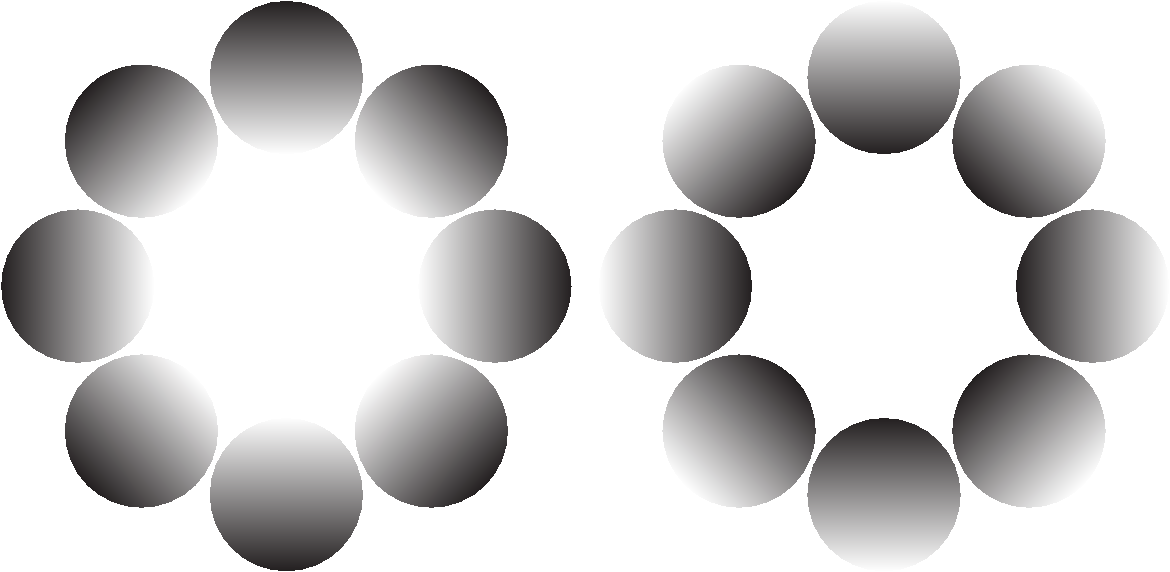
Our experiences of perceptual misunderstanding are sometimes occurred by optical illusions to create the visual image that can be deceptive interpretations. Optical illusions trick our brains into believing things which may or may not be real. This is not on retina level, but on the cortical level processing in our brain. This kind of “an error of brain” is very valuable to know how our brain interprets things what we perceive in the world. For example, Figure1 left is called glare illusion which has a luminance gradation converging on the central region and evokes brightness enhancement and self-luminosity in the center white area. Interestingly, previous studies have reported that while observers are viewing the glare illusion and monitored their pupil with an eye-tracker, which resulted in a larger pupil constriction compared to its control object (i.e. Figure1 right). Since these two objects consist of the identical element of gradation balls, when human look at the object imitating an emitting light, the whole network among several brain areas may activate involving our memory or experience to prevent our eyes as an adaptive response in terms of the pupil constriction. We are investigating the brain mechanisms to optical illusions based on psychological responses such as EEG and pupillometry.

